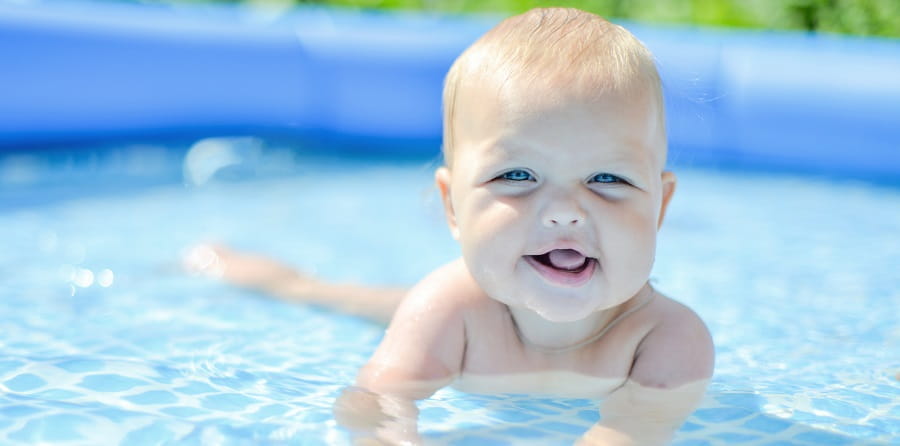
Portable swimming pools pose a serious drowning risk to children. Children drown in portable swimming pools every year in Australia. Those most at risk are children under three years of age, and more than half of those who have drowned are boys.
What are portable swimming pools?
There are many types of portable pools, ranging from small plastic or inflatable pools designed for young children, to large inflatable or flexible pools that can accommodate adults. Portable pools may also be advertised as wading pools, paddling pools, inflatable pools and kiddie pools.
What are some of the safety issues associated with portable swimming pools?
11% of all drowning deaths occur in private swimming pools, including portable pools and private spas. However, among children aged 0-4 years this figure rises to 50%, the highest of any age group. Parents often do not actively supervise their children when they are in portable swimming pools or leave them alone for a second to retrieve something from the house, believing that because there is only a small amount of water their child cannot drown. Children may also find their own way into portable pools by accessing the backyard from the house unnoticed by adults. Children can drown in just seconds.
How many children have drowned in portable swimming pools?
In Western Australia, home swimming pools pose the greatest drowning risk to children. In the 2021-22 financial year, 65.5% of fatal drowning deaths of children under five in WA occurred in home swimming pools. Many more children are hospitalised as a result of a drowning incident in a portable swimming pool. Some children are left with persisting neurological impairment as a result of a non-fatal drowning that can affect them for the rest of their lives.
Why do young children drown in portable swimming pools?
Young children are at risk of drowning in portable pools for a number of reasons. Young children are naturally fascinated by water and are top heavy so when they lean over to look into water or reach for an object they can easily topple over and drown in just a few centimetres of water. Young children are unable to understand the concept of danger and may have difficulty in understanding that water could cause them harm. Childhood drowning is a silent event as children are often unable to cry out for help.
How can I keep my children safe around portable pools?
Make your portable pool SAFE!
Supervise. Regardless of the depth or size of the pool you should always be within arms’ reach of your child and actively supervising, by having constant visual contact with your child and be in a position to respond quickly. Parents should not leave young children in the care of older siblings.
Act. Learn CPR so that you are prepared to act in an emergency.
Fence. By law, in Western Australia any pool that is designed for swimming, wading or paddling which contains water more than 300mm deep must be surrounded by a safety barrier that complies with the law. This means that the pool is isolated from the house with a well-constructed and well-maintained barrier and a gate that self-closes and self-latches.
Empty. For small paddling pools ensure that all water is emptied out as soon as possible after use. Always store the pool securely out of reach of children and somewhere it cannot fill with rainwater or water from sprinklers.
Portable Pool Safety Checklist
- Check with your local council regarding fencing requirements.
- Ensure you always actively supervise children within arms’ reach whenever they are in, or around the water.
- Never rely on older children to supervise younger children, no matter how confident you are about their ability to supervise the younger child.
- For smaller pools – ensure you empty them and put them away when you are finished with them.
- Always store portable pools safely away from young children. Ensure the pool cannot fill with rainwater or water from sprinklers.